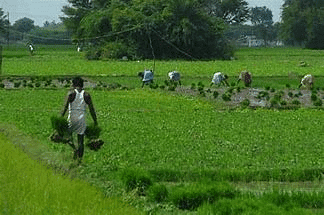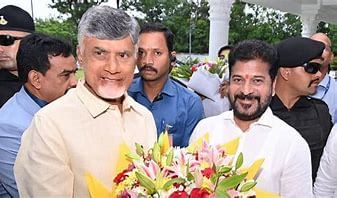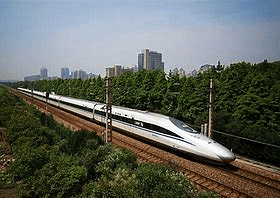UPSC Daily Current Affairs - 7th July 2024 | Current Affairs & Hindu Analysis: Daily, Weekly & Monthly PDF Download
GS3/Economy
Significance of Primary Agriculture Credit Societies
Source: Indian Express

Why in News?
Union Minister of Home Affairs and Cooperation Amit Shah urged stakeholders in cooperative societies to support the establishment of primary agricultural credit societies (PACS) in all villages and blocks of the country.
What is a Primary Agricultural Credit Society (PACS)?
PACS are village-level cooperative credit societies that serve as the last link in a three-tier cooperative credit structure headed by the State Cooperative Banks (SCB) at the state level.
- Credit from the SCBs is transferred to the District Central Cooperative Banks (DCCBs), that operate at the district level.
- The DCCBs work with PACS, which deal directly with farmers.
- Since these are cooperative bodies, individual farmers are members of the PACS, and office-bearers are elected from within them. A village can have multiple PACS.
- PACS provide short-term and medium-term agricultural loans to the farmers for various agricultural and farming activities.
Number of PACS in India:
- The first PACS was formed in 1904.
- Currently, there are more than 1,00,000 PACS in the country with a huge member base of more than 13 crore farmers.
- However, only 65,000 of them are functional.
Significance of PACS:
- The attraction of the PACS lies in the last-mile connectivity they offer. For farmers, timely access to capital is necessary at the start of their agricultural activities.
- PACS have the capacity to extend credit with minimal paperwork within a short time.
- With other scheduled commercial banks, farmers have often complained of tedious paperwork and red tape.
- For farmers, PACS provide strength in numbers, as most of the paperwork is taken care of by the office-bearer of the PACS.
- In the case of scheduled commercial banks, farmers have to individually meet the requirement and often have to take the help of agents to get their loans sanctioned.
Challenges Faced by PACS:
- Since PACS are cooperative bodies, political compulsions often trump financial discipline, and the recovery of loans is hit.
- Many committees have pointed out various issues plaguing the cooperative system such as;
- Lack of active participation by the members.
- Lack of professionalism.
- Absence of corporate governance.
- Bureaucratisation.
- Ageing and unenthusiastic employees.
News Summary:
- Addressing a programme at Gandhinagar marking the 102 International Day of Cooperatives in Gandhinagar, Union Minister Amit Shah said that the Government will set up primary agricultural credit societies (PACS) in all villages and blocks of the country.
- There are 2 lakh such gram panchayats which lack PACS.
- He further appealed to all cooperative societies to open bank accounts with local district and state cooperative banks, as well as buy from local dairies, to strengthen the cooperative sector.
- He said that the cooperation ministry has undertaken a drive to “establish 2 lakh dairies and PACS” for the 2 lakh gram panchayats which he says lack such facilities.
- He added that this move is in addition to an established database which identifies cooperative societies across the country.
- In March 2024, the Government had launched the National Cooperative Database and released the ‘National Cooperative Database 2023: A Report’.
- He said that the Centre has decided to ensure the formation of Primary Agricultural Credit Societies in every village by 2029.
- Government will come out with a new national cooperative policy within a month.
- The new policy, replacing the existing one formulated in 2002, will seek to further strengthen the cooperative movement in the country.
- Government to unveil new cooperative policy in a month.pdf (Size: 73.4 KB) Click to View More Economics
GS2/Polity
Resolution of the Pending Issues Between Telangana and Andhra Pradesh
Source: The Hindu
Why in news?
In a significant first step towards resolving the pending issues between Telangana and Andhra Pradesh resulting from the Andhra Pradesh Reorganisation Act 2014, the CMs of both states agreed to establish two committees.
- The two committees - one composed of ministers and the other of officials - will develop a plan for resolving the issues.
Issues Pending Between Telangana and Andhra Pradesh:
- Background:
- After the bifurcation of the erstwhile united Andhra Pradesh (AP) in 2014, division of assets and liabilities between the two States remains to be a challenge.
- The States make their own interpretation of the provisions under the Andhra Pradesh Reorganisation Act 2014.
- What assets are to be divided?
- There are 91 institutions under Schedule IX and 142 institutions under Schedule X of the Act.
- Another 12 institutions, not mentioned in the Act, have also become contentious between the States.
- Hence, the issue involves 245 institutions with a total fixed asset value of ₹1.42 lakh crore.
- Key bone of contention between the two States:
- The division of several institutions like the RTC headquarters and the Deccan Infrastructure and Landholdings Limited (DIL) have become the key bone of contention between the two States.
- These institutions have huge land parcels in their possession.
- What are the AP government's claims?
- The AP government is firm on the implementation of the recommendations given by the expert committee (headed by Sheela Bhide - a retired bureaucrat) for bifurcation of 89 out of the 91 Schedule IX institutions.
- But it blames the Telangana government for selectively accepting the recommendations, resulting in delays in division of assets and liabilities.
- What is the stand of Telangana government?
- It has contended that the expert committee’s recommendations were against the interests of Telangana.
- The assets located outside the erstwhile united State like Andhra Pradesh Bhavan in New Delhi could be divided between the States on the basis of population as per the provisions of the Act.
- Role played by the Centre:
- The Act empowers the Union Government to intervene as and when needed.
- However, several meetings of the dispute resolution committee headed by the Union Home Secretary could not break the impasse even after 10 years of bifurcation.
- The primary issue before the committees is the apportionment of assets and liabilities of different institutions listed under Schedule IX and X, and those that did not find mention in the Reorganisation Act.
- The officials committee would deliberate on the issues that could be resolved at their level across the table.
- The issues that could not be resolved at the official level would then be forwarded to the committee comprising select ministers from the two States for finding a solution to the pending issues.
- If there are some issues remaining after the Ministerial committee finalizes modalities, they will be referred to the Chief Ministers of the two States.
GS2/Polity
What Does the Karnataka Bill Promise Gig Workers?
Source: The Hindu
Why in News?
On June 29, the Karnataka government published the draft of the Karnataka Platform-based Gig Workers (Social Security and Welfare) Bill, making it the second Indian State to initiate such a move, the first being Rajasthan.
About Gig Economy (Meaning, Gig Workers, Size of Economy, Average Income, Challenges, etc.)
- A gig economy is a free market system where organizations hire or contract workers for a short span of time.
- Positions are temporary to meet the company’s requirements through short-term engagements.
- Startups like Ola, Uber, Zomato, and Swiggy are main sources of the gig economy in India.
What is Gig Economy?
- A gig worker is someone who performs work outside traditional employer-employee relationships.
- They include independent contractors, online platform workers, and temporary workers.
What is the Size of Gig Economy in India?
- Approximately 47% of gig work is in medium-skilled jobs, 22% in high skilled, and 31% in low-skilled jobs.
- Studies indicate significant gig workforce growth in developing countries compared to developed economies.
What is the Average Age/Income of Gig Workers in India?
- The median age of Indian gig workers is 27, with an average monthly income of Rs 18,000.
- About 71% are sole breadwinners, operating with an average household size of 4.4.
Challenges Faced by Gig Workers:
- Challenges include low wages, unequal gender participation, and lack of upward mobility.
- Workers often do not receive benefits like paid leaves, travel allowances, and provident fund savings.
Improving Gig Workers' Living Standards
- Fiscal incentives may be provided for businesses supporting women workers.
- Retirement benefits and insurance cover are recommended for gig workers.
- Providing income support, paid sick leave, and safe working conditions are crucial steps for worker welfare.
Rajasthan Platform Based Gig Workers (Registration and Welfare) Act 2023
- The Act in Rajasthan aims to ensure gig workers’ registration, welfare, and grievance redressal.
- It includes provisions for a social security fund funded through transaction fees.
Key Features of the Draft Bill
- The draft emphasizes transparent termination grounds, notice periods, and fair payment practices.
- It grants gig workers the right to refuse gigs with reasonable cause without repercussions.
- A welfare fee will contribute to a fund for gig workers' wellbeing.
GS3/Economy
Tax on Ultra High Net Worth Individuals
Source: The Hindu
Why in news?
The Global Tax Evasion Report 2024 - a report commissioned by Brazil’s G-20 presidency, was recently released.
- In this report, French economist Gabriel Zucman has recommended an annual 2% tax on individuals holding wealth exceeding $1 billion.
What is a Wealth Tax?
A wealth tax is a tax based on the market value of assets owned by a taxpayer.
Analysing the Proposal to Tax Ultra High Net Worth Individuals:
Meaning:
A wealth tax is a tax based on the market value of assets owned by a taxpayer.
Wealth tax in India:
It was governed by the Wealth Tax Act, 1957, however, it has been ruled out with effect from 1st April 2016.
Pros and Cons of a Wealth tax
Proponents:
- This type of tax is more equitable than an income tax alone, particularly in societies with significant wealth disparity.
- It promotes fairness and equality by taking into account taxpayers’ overall economic status, and their ability to pay tax.
Critics:
- It discourages the accumulation of wealth, which drives economic growth.
- Administration and enforcement of a wealth tax present challenges, as determining the fair market value of assets leads to valuation disputes between taxpayers and tax authorities.
- Uncertainty about valuation also could tempt some wealthy individuals to try tax evasion.
Recommendation:
- Individuals possessing more than $1 billion in total wealth (assets, equity shares, etc) would be required to pay a minimum (2% of their wealth) amount of tax annually.
- This would be the basic requirement to safeguard global tax progressivity and could potentially raise $200-$250 billion a year globally from about 3,000 individuals.
Rationale for such a tax:
- The wealth of the top 0.0001% households has surged more than fourfold since the mid-1980s.
- They owned 3% of world GDP in wealth, which rose to 13% in 2024.
- However, the contemporary tax systems worldwide are not effectively taxing the wealthiest individuals (effective tax rates are between 0% and 0.5% of their wealth).
- As a result, ultra-high-net-worth individuals tend to pay less in tax relative to their income.
Significance of this proposal:
- Progressive taxation is a key pillar of democratic societies that helps strengthen social cohesion and trust in governments to work for the common good.
- Better tax revenues are also crucial to meet the investments required to address the climate crisis.
Impact of this proposal:
- Finance Ministers of the G-20 group are set to meet in Rio de Janeiro.
- The proposal will serve as the starting point for a global discussion on ensuring under-taxed billionaires are made to contribute more to reduce inequality worldwide
Supporters and opposers of the proposal:
- Supporters: Brazil, France, Spain, Colombia, Belgium, the African Union and South Africa have backed the idea.
- Opposers: The U.S. Treasury Secretary Janet Yellen has opposed a global wealth levy.
Relevance of the proposal for India:
- According to a study titled ‘Income and Wealth Inequality in India,’ India has seen a disproportionately sharper increase in wealth at the top of the pyramid between 2014-2023.
- Top 1% income and wealth shares (22.6% and 40.1%) are at their highest historical levels and India’s top 1% income share is among the very highest in the world.
- Therefore, a ‘super tax’ on the very wealthy might be a good idea for fighting the growing inequalities and providing additional fiscal space for the Indian government.
- A mere 2% tax on the total net worth of the 162 wealthiest Indian families will generate revenue equivalent to 0.5% of the country's GDP.
GS-II/International Relations
China’s Ambitions for Pan-Asian Rail Network
Source: Indian Express
Why in News?
China is willing to work with Malaysia to study connecting the East Coast Rail Link (ECRL) with railway links in Laos and Thailand.
East Coast Rail Link (ECRL) Project
- Overview: The ECRL is a 665-km railway in Malaysia connecting Kota Bharu in the northeast to Port Klang on the west coast.
- Economic Cooperation: A major project between China and Malaysia, part of China’s Belt and Road Initiative (BRI).
- Purpose: Aims to link cities, upgrade public transportation, and boost economic connectivity.
- Timeline:
- 2017: Project started.
- Challenges: Faced funding and political issues.
- 2020: Renegotiated deal.
- 2027: Expected completion.
China’s Pan-Asian Rail Network
- Ambition: China aims to create a rail network across Southeast Asia as part of the BRI.
- Routes: Includes lines linking China with Myanmar, Laos, Thailand, Vietnam, Cambodia, and Malaysia.
- Objective: Enhance regional connectivity and economic ties.
- Challenges: Different rail track widths and high costs.
Current Status
- Operational: Only the Laos-China section (Kunming to Laos) is operational as of 2021.
- Delays: Projects in Thailand face delays and cost concerns.
Implications
- Influence: China’s geographical and economic influence in Southeast Asia is significant.
- Regional Ambitions: The ECRL and rail network highlight China’s strategic goals in the region.
- BRI Strategy: Extending influence through infrastructure investments across Asia, Africa, and beyond.
Concerns
- Challenges: Financial sustainability, technological compatibility, and geopolitical tensions.
- Debt-Trap Diplomacy: Criticism that China may leverage debt to gain control over developing countries.
Impact on India
- Neighbourhood Influence: BRI allows China to expand its presence in India's neighborhood.
- Debt Distress: Neighboring countries may fall into debt dependency on China.
- Strategic Locations: Chinese presence near the Indian border (e.g., Pakistan Occupied Kashmir).
Way Forward for India
- Soft Power: Use cultural and religious ties to counter Chinese influence.
- Diplomatic Strategy: Maintain a working relationship with China, take firm stands on issues like BRI and borders.
- Alliances: Continue cooperation with Quad countries and strengthen ties with Russia.
- Act Far East Policy: Implement this policy quickly to enhance engagement in the region.
GS-III/Defence and Security
 |
Download the notes
UPSC Daily Current Affairs - 7th July 2024
|
Download as PDF |
Defense production hit record high in 2023-24
Source: The Hindu
Why in News?
The value of defense production in India has gone up to ₹1,26,887 crore in FY 2023-24, reflecting a growth of 16.7% over the defense production of FY 2022-23.
Indian Defense Production and Sector Overview
- Growth: Since 2019-20, India's defense production value has increased by over 60%.
- 2023-24 Breakdown: Public sector contributed 79.2%, private sector 20.8%.
Defense Sector Highlights
- Budget: In 2024, India's defense budget was US$ 74.7 billion, the fourth highest globally.
- Expenditure: India had the world's fourth-largest defense expenditure in 2022.
- Export Target: India aims for US$ 6.02 billion in annual defense exports by 2028-29.
- Recent Exports: ₹21,083 crore in FY 2023-24, a 32.5% increase from ₹15,920 crore in the previous fiscal year.
Advantages of Growth in Defense Production
- Self-Defense: Necessary due to hostile neighbors like China and Pakistan.
- Strategic Advantage: Enhances India’s geopolitical stance as a net security provider.
- Technological Advancement: Boosts other industries, driving economic growth.
- Economic Savings: Reduces the 60% import expenditure of the 3% GDP spent on defense.
- Employment: Generates jobs in defense and related industries.
Concerns
- Narrow Private Participation: Limited by a non-conducive financial framework, hindering modern design and innovation.
- Lack of Critical Technology: Challenges in design capability, R&D investment, and manufacturing major subsystems.
- Coordination Issues: Overlapping jurisdictions between the Ministry of Defence and the Ministry of Industrial Promotion.
Government Initiatives to Increase Defense Exports
- IDR Act: Rationalized the defense products list, extended the industrial license validity from 3 to 15 years.
- Schemes:
- iDEX: Promotes innovation in the defense and aerospace ecosystem.
- DTIS: Supports defense testing infrastructure.
- FDI: Enhanced to 74% through the automatic route and 100% by government route.
- Defense Corridors: Established in Tamil Nadu and Uttar Pradesh to promote defense manufacturing.
- DPEPP 2020: A draft policy to enhance defense production capabilities for self-reliance and exports.
- Defence Acquisition Council (DAC): Boosted 'Make in India' with capital acquisition proposals worth US$ 1.07 billion.
Way Forward
- Green Channel Status Policy (GCS): Encourages private sector investments in defense production.
- Defense Startups: Around 194 startups developing innovative tech solutions.
- Foreign Investment: Eased restrictions to support the goal of Atmanirbhar Bharat (self-reliant India).
GS-III/Science and Technology
Axiom-4 Mission
Source: Indian Express
Why in News?
The Indian Space Research Organisation (ISRO) has shortlisted two of its four trained Gaganyaan astronauts for a mission to the International Space Station (ISS) in collaboration with United States’ NASA later this year.
Axiom-4 Mission Overview
- Astronaut Selection: Part of the Axiom-4 mission, the fourth private astronaut mission by NASA and Axiom Space.
- Timeline: Scheduled for 'no earlier than October 2024'.
- Duration: Up to 14 days docked at the International Space Station (ISS).
Historical Significance
- Collaboration: Marks a milestone in India's space exploration, showing growing cooperation between ISRO and NASA.
- Commitment: Highlights India's dedication to human spaceflight.
- Legacy: Selected astronauts aim to follow Rakesh Sharma, the first Indian in space in 1984 on a Russian spacecraft.
Training and Preparation
- Current Training: Gaganyaan astronauts trained in India, focusing on the Gaganyaan mission.
- Specialized Training: For the ISS mission, they need specialized training in ISS modules, protocols, and operations.
- Location: Training will occur in the United States, in collaboration with NASA and international partners.
|
39 videos|4566 docs|979 tests
|
FAQs on UPSC Daily Current Affairs - 7th July 2024 - Current Affairs & Hindu Analysis: Daily, Weekly & Monthly
| 1. What is the significance of Primary Agriculture Credit Societies? |  |
| 2. How can the pending issues between Telangana and Andhra Pradesh be resolved? |  |
| 3. What does the Karnataka Bill promise gig workers? |  |
| 4. What is the tax on Ultra High Net Worth Individuals? |  |
| 5. What are China's ambitions for a Pan-Asian Rail Network? |  |

































